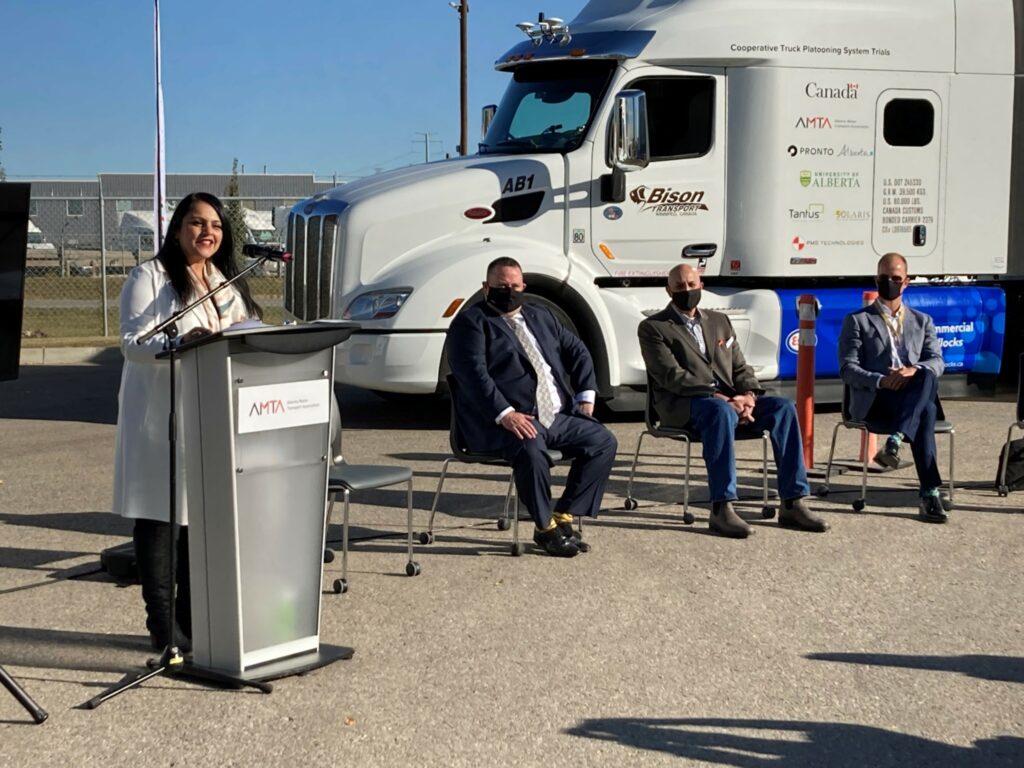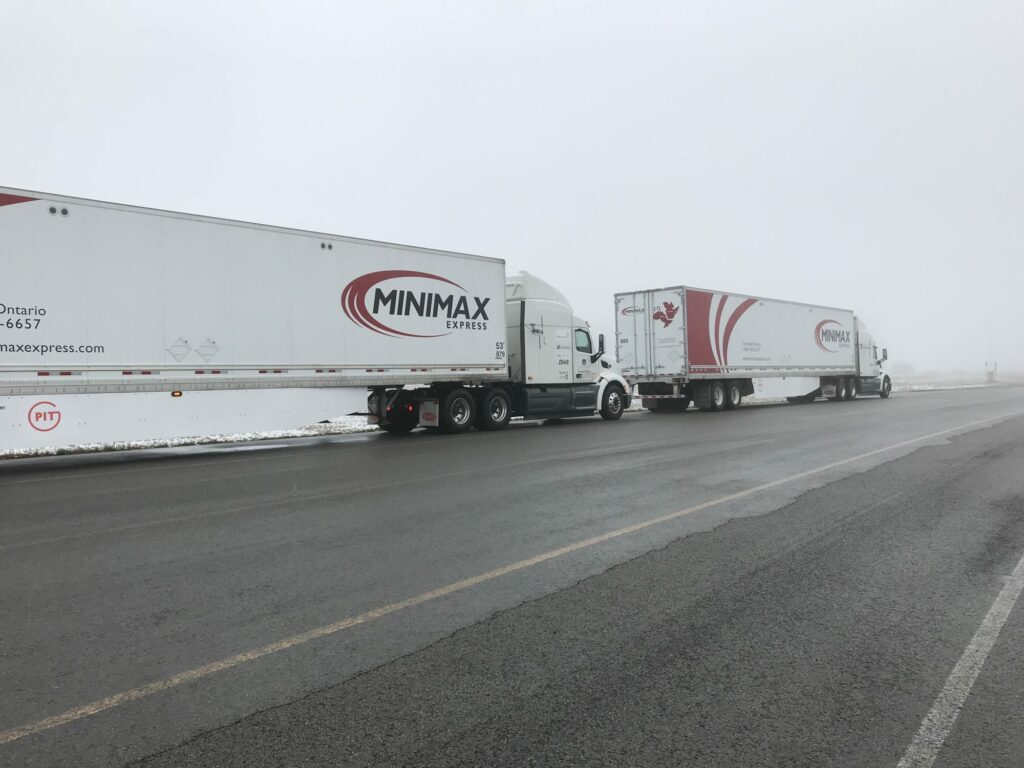Platooning trucks hit Alberta highways in November
A project led by the Alberta Motor Transport Association (AMTA) will test a pair of platooning trucks on Alberta highways between November and April, in one of Canada’s latest semi-autonomous vehicle demonstrations.
Bison Transport will operate the sensor-connected Peterbilt 579s – dubbed Daisy and Lilly – under the Cooperative Truck Platooning System project, which benefits from $2.3 million in Transport Canada funding.

Drivers will be training around Rocky View, Alberta, before beginning the project, the association said in a statement released on Wednesday. Plans for the initiative were first announced in May.
Driver assisting technology from Pronto will rely on sensors, radar and cameras to establish tight following systems between the two trucks. Active braking and acceleration systems in the rear vehicle will respond to the actions of the truck up front.
Closer following distances offer potential benefits such as reduced aerodynamic drag and better fuel efficiency.
Based on earlier tests, the North American Council for Freight Efficiency (NACFE) says fuel savings likely average close to 4% across two trucks that maintain following distances of 40-50 feet. Trucks in the rear position of such tests have seen fuel economy increase by as much as 10%.
Transport Canada says 6% fuel economy gains are possible in platoons of three tractor-trailers that each weigh 65,000 lb., when the vehicles are spaced 17.4 meters apart at highway speeds. Earlier tests on a track in Blainville, Que. realized savings as high as 14.2% in a controlled setting.
The AMTA-coordinated demonstration project will run along the Queen Elizabeth II Highway between Calgary and Edmonton, as well as the Trans-Canada Highway between Calgary and Banff. The participating trucks completed performance testing at Transport Canada’s Motor Vehicle Test Center in Blainville, Que., this August.
The Bison truck drivers at the wheel volunteered for the project.

“Safety has become a cornerstone of who Bison Transport is identified with throughout our industry. This initiative aligns perfectly with this core operating philosophy,” Bison Transport said in a related statement.
“Technology and innovation like this will diversity our province’s economy and attract investment,” said Alberta Transportation Minister Rajan Sawhney.
The research partnership will also include the University of Alberta, Solaris Fatigue Management, Tantus, PMG Technologies, Esso Commercial Cardlock, and Alberta Transportation.
But this isn’t the only active platooning project in Canada. Robotic Research and FPInnovations are collaborating to develop a platooning system that would work in off-road forestry operations – in that case to potentially address driver shortages.
In late 2018, PIT Group, Transport Canada, Auburn University, and Minimax Express Transportation tested platooning trucks on a 1,000-km route through Montreal, La Tuque, Trois-Rivieres, and Blainville, Que.
Have your say
This is a moderated forum. Comments will no longer be published unless they are accompanied by a first and last name and a verifiable email address. (Today's Trucking will not publish or share the email address.) Profane language and content deemed to be libelous, racist, or threatening in nature will not be published under any circumstances.
Sounds like one of those ideas that’s interesting in theory.
But what happens if a car is trying to pass these 2 trucks and ends up in between the trucks?
Imagine the trouble when you’ve got 3 of these trucks platooned together.
I hope these things are limited to operating on multi-lane highways.
-
Exactly!
Hmm has anyone heard of the elusive roaming vehicles that brake check big trucks these days. Has that been factored into this Platooning 2 trucks. Many driver engaged trucks have done this platooning and they all drove off the roads into a parking pattern. If the industry just opened the wallet more they could retain good drivers instead of trying this kind of driverless game.
-
You make some excellent points.
It really makes you wonder why the bean counters would rather spend criminal amounts of money on autonomous technology rather than pay a decent rate to QUALIFIED drivers and weed out the bad actors in the industry?
Ultimately it will be one driver…..5 semi trailers following 5 feet from each other.
At 17.4 metres apart (as per article) which is 57 feet – I guess they’ll have to get drivers to back off and stop tailgating to be able to achieve this.
How many drivers are already less than that without any communication between the trucks. Just this very morning I saw three trucks on the 401 westbound on the hill towards Exit 268 with less than 3 (three) metres following distance at 100+ km/h.
The next media attention grabbing deadly crash is only a matter of when.